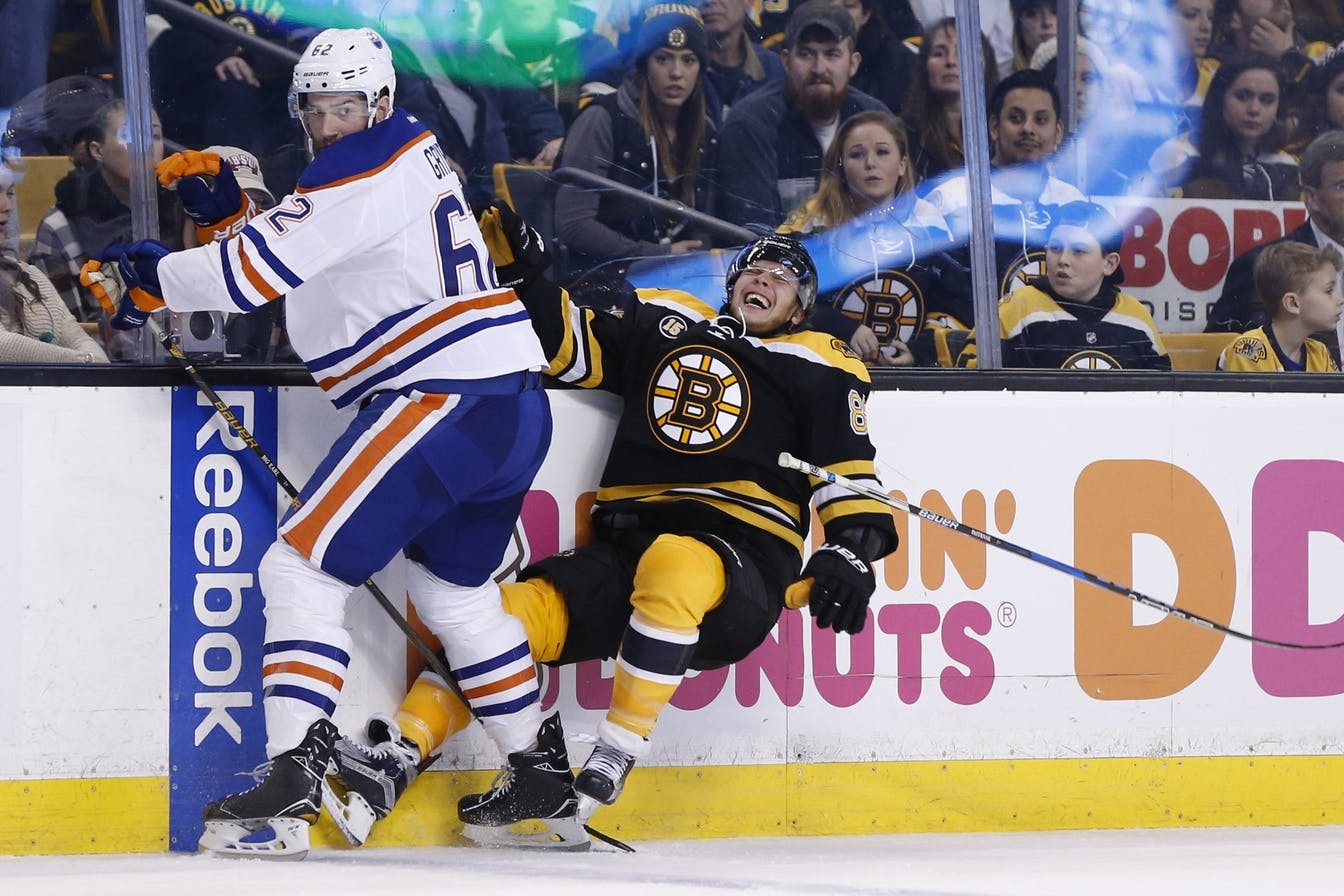Eric Gryba is a good example of savvy cap management

2016-17 Edmonton Oilers: No. 62 RD Eric Gryba
I don’t want to exaggerate Eric Gryba’s importance to the Edmonton Oilers. He is, after all, probably best suited to his current No. 6/7 defenceman role. Yet, as a fan of both intelligent cap management and players who solve rather than create problems, it’s really easy to like Gryba.
Let’s start with the cap management. Gryba was acquired by Edmonton at a juncture where he had one season remaining on a two-year contract, and despite reasonably strong play for the Oilers he’s actually seen his cap hit go down each year since:
- 2015-16: $1.25 million
- 2016-17: $950,000 (two-way deal)
- 2017-18: $900,000
- 2018-19: $900,000
It’s hard to go wrong on a deal that can be buried in the minors at no cap penalty if need be. And while some will shrug and point out that it’s rational to give a No. 6/7 defenceman that kind of contract, the simple fact is that physical third-pair defencemen get overpaid all the time.
The physical element is part of the value that Gryba brings to the Oilers. I’m a big believer in having end-of-roster players with varied skillsets, so that the coach has the option to offer differing lineups to different kind of opponents. Gryba gives coach Todd McLellan teeth at the end of his defensive depth chart, and brought something different than Matt Benning last season. Next season, he’ll give the coach something different than Yohann Auvitu.
There are two major problems with a lot of players glorified for bringing that physical dimension, though. One is that they tend to get paid a premium, something which we‘ve seen is not the case with Gryba. The other is that a lot of them can’t really play the game at an NHL level. This also isn’t the case with Gryba.
Over the last four seasons, Gryba’s defence pairs in Edmonton and Ottawa have been on the ice for 110 goals for and 111 goals against in 5-on-5 situations. Those teams, overall, were minus-8. In other words, over those four seasons Gryba’s pairing treaded water, which isn’t spectacular but also really isn’t bad for a guy at the end of the roster. These goal numbers mirror Gryba’s on-ice shot metrics.
Last year was kind of a weird season for Gryba, in that he had an up year by on-ice shots but a down year by on-ice goals. These fluctuations happen in single seasons, and over the last four years the shot and goal metrics line up almost exactly, so I’m not inclined to read anything into it. This is particularly true because the main problem in the goals department was a lack of offence (with Gryba and primary partner Darnell Nurse on the ice together, the Oilers allowed a paltry 1.67 goals against per hour but scored a miserable 0.83 goals for per hour) and Gryba has never been particularly responsible for driving offence.
Gryba is also aided by being a right shot, which was a major selling feature back when the Oilers were lousy with left-shot defencemen, though the team situation is more balanced now than it was upon his arrival. He can kill penalties, and as a 29-year-old with 258 games of major league experience can shuttle back and forth between the press box and the lineup with ease.
Bottom line: Gryba is a limited player, but he’s also a big, physical, right-shooting defenceman who can legitimately handle NHL minutes. He’s yet another example of GM Peter Chiarelli finding major-league muscle without paying a premium for it.
Previous year-end reviews:
- Centre: Leon Draisaitl, Mark Letestu, Drake Caggiula, David Desharnais, Anton Lander
- Left Wing: Milan Lucic, Patrick Maroon, Matt Hendricks, Jujhar Khaira
- Right Wing: Jordan Eberle, Zack Kassian, Tyler Pitlick, Iiro Pakarinen
- Left Defence: Andrej Sekera, Darnell Nurse, Griffin Reinhart
- Right Defence: Adam Larsson, Kris Russell, Mark Fayne
- Goal: Cam Talbot, Laurent Brossoit, Jonas Gustavsson
Recent articles from Jonathan Willis





